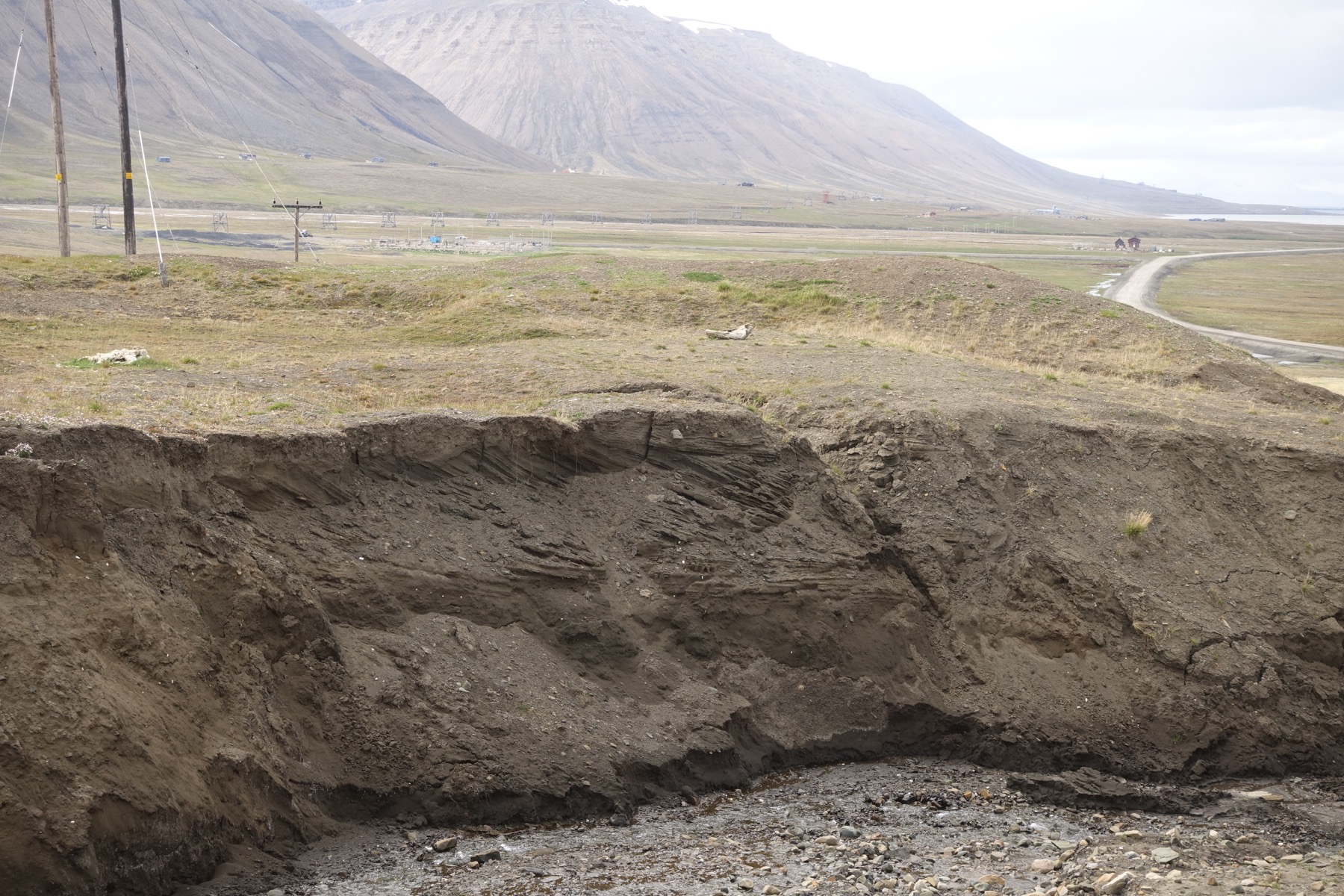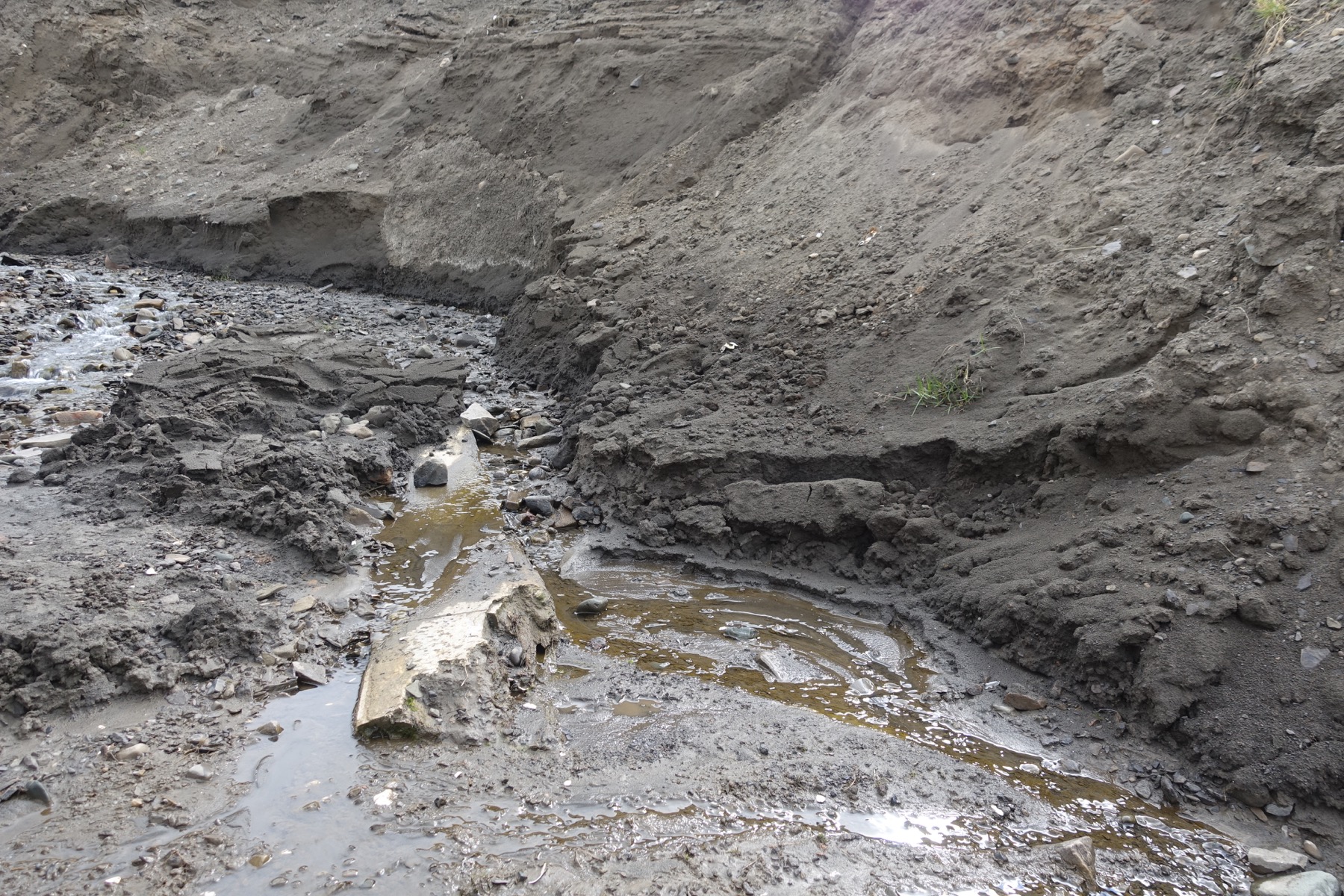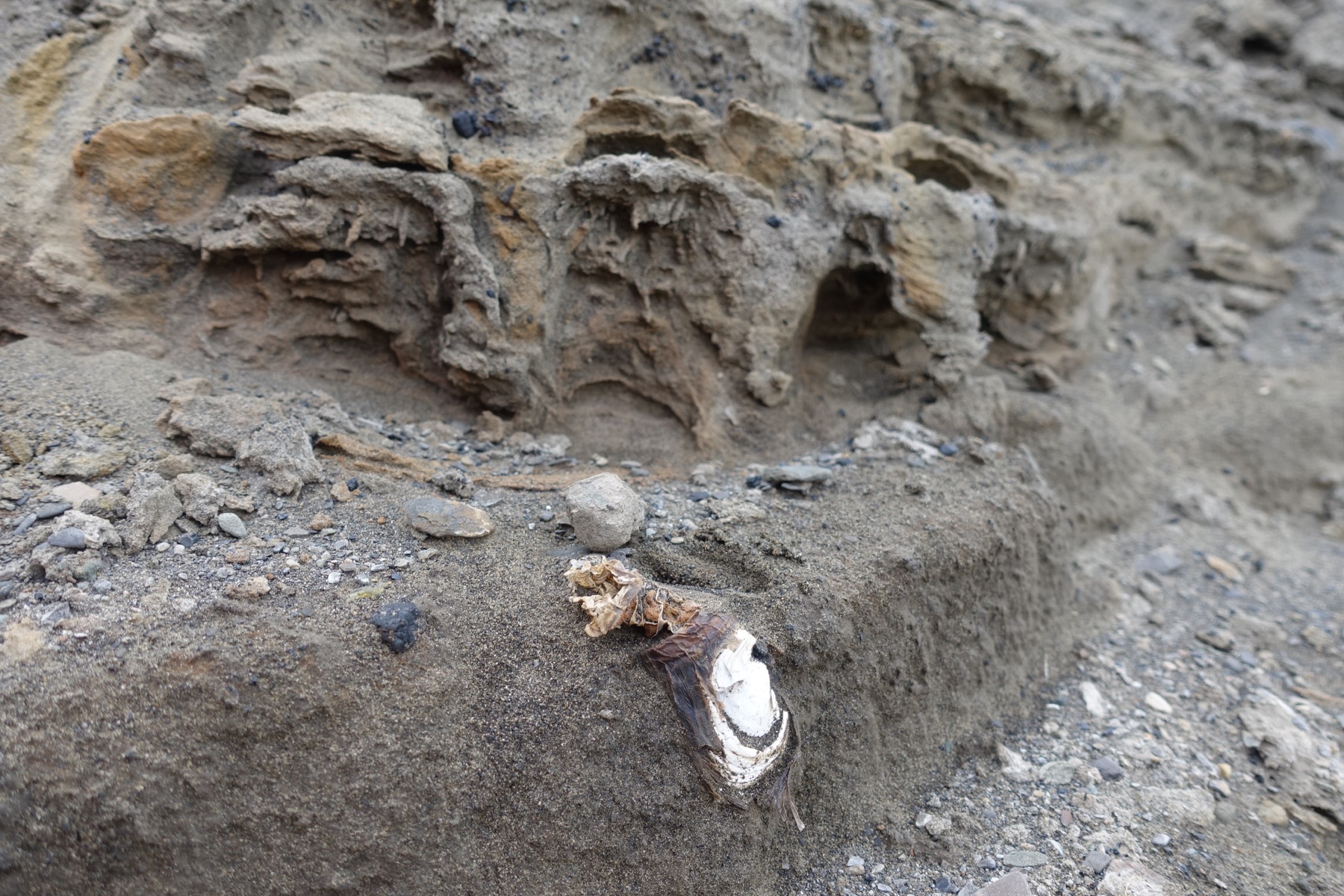In the small valley beside the road, you can find mummified shells and whalebones which are 10 000 years old and still smell.
The increase and loss of continental-scale ice volume during the Pleistocene left indirect, but nevertheless quite obvious traces in the landscape. The glaciers on Svalbard were well beyond a thousand metres thick during the last ice age, and the weight of the ice pressed the earth crust down by almost two hundred metres. When this ice disappeared, the crust started to pop up again. The result was land uplift and consequently a retreating shoreline, leaving traces of former beaches such as beach ridges and occasionally driftwood, whalebones and seashells inland. The whale bones and mummified shells that are found here in Bolterdalen are dated to be 10 000 years old. The shells (Mya truncata) lived in the sandy sea floor just in front of the Bolterdalen-glacier which reached all the way out here. The gravel above is a former beach at an altitude of now 62 m above sea level, which means that the land uplift relative to the sea level was 62 m within 10 000 years. The coastline retreat during that period accounts to more than 7 km. You can find other quite obvious fossil beach ridges at Vestpynten and at Revneset.






